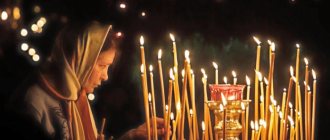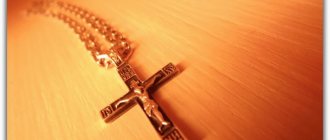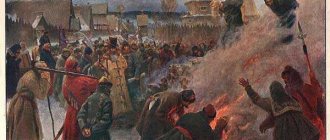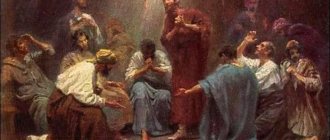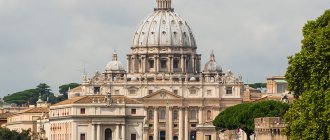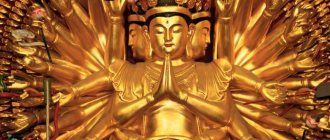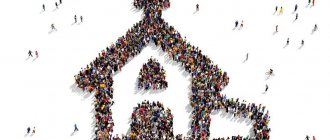In modern Europe, which was once the stronghold of the Christian world and the territory from which it, in fact, began in its modern form and scale, religion is now going through hard times. It is not for nothing that so many consider the burned Notre Dame a very eloquent symbol.
However, the process of ousting religion from life in different European countries proceeded and is proceeding differently. And if, for example, Poland still remains a generally Christian country, then this can only be said very conditionally about the Scandinavian countries. How are things going in this area in one of the most religious countries in Europe - Catholic Ireland? How far has the process of de-Christianization gone compared to neighboring England? How is the picture of spiritual life on the “Emerald Isle” changing?
Historical roots of religion in Ireland
The history of religion in Ireland is divided into two eras: pre-Christian and Christian. Pre-Christian religion - Druidism. Druids are a class of priests of the ancient Celts who were engaged in science, medicine and judging. The first mentions of them are contained in the texts of the traveler Pytheas. It was believed that their main role was the transmission of heroic legends and myths to the younger generation by word of mouth. In the IV-V centuries. they lost their status as priests, turning into village healers. In the twentieth century, the teachings of the Druids were revived and received the name neo-Druidism.
Now the religion of Ireland is represented by two main branches: the Catholic and Protestant churches.
Christianity, according to Prosper's Chronicle, originated in the 4th-5th centuries. ad. It began to gain increasing popularity among the nobility against the background of the decomposition of the primitive communal system. The activities of Patrick, who was later canonized, were of great importance.
Pope Celestine sent Palladius to Ireland as the first Christian bishop. It is assumed that Christian communities existed even before 431, their importance was great, which is why the Pope sent a bishop there.
Road to the temple
Actual membership in a spiritual community in all traditional Christian denominations is determined by the level of attendance of the population at Sunday services in the church. Mass attendance in Ireland has fallen from 91% of those attending services weekly in 1972 to 36% of those attending monthly in 2017. The same studies found that today's Irish tend to put too many things above religion when defining their identity. Of course, compared to the rest of Europe, the Irish are still much more religious, and such figures as in Ireland already seem like something fantastic in many other EU countries.
Moreover, the authority of the church, as such, has been preserved much more in Ireland than in many other places on the continent. Most even non-practicing Irish Christians believe that the church plays an important and positive role in society (for example, in helping the poor and needy). So, despite decades of scandal, the good that churches do to people is still fully recognized in Ireland.
But nevertheless, this does not change the main trends. In present-day Ireland, as throughout Europe, the lion's share of the population is not practicing Christians. And those Irish Catholics who live in compliance with all religious norms, which were in the order of things for their ancestors just one generation ago, in the modern situation lead, rather, a countercultural lifestyle - the opposite of the behavior of the bulk of society.
Against this backdrop, changes in the Irish religious landscape increasingly include a growing and very active Muslim minority. It is not as radical as similar populations from other countries, since it consists mainly of representatives of former British colonies in Asia who moved to Ireland, such as Pakistan and Bangladesh, where traditional forms of Islam are not particularly aggressive (more recently We are not talking about Wahhabi trends brought into these regions - this is a separate issue).
However, some Christian experts even consider this proximity to be positive. For example, the Rev Niall Coll of St Mary's College, Belfast, asks whether the fact that Muslims have no hesitation in declaring the reality of God could provoke Christians to return to their own traditions in a constructive way.
Whether, at the same time, Muslims themselves can preserve the strong religious identity that is characteristic of them, in the face of that “universal solvent” of individualism, which is now the dominant Western ideology, is also a big question.
However, for now, at their expense, the religious landscape of the “Emerald Isle” can change quite significantly.
Protestantism in Ireland
Protestantism came to the state in the 17th century and is associated with the resettlement of colonists from Britain. Initially, a small community formed. However, after a short amount of time in the northeastern counties, the number of Protestants increased markedly and exceeded the number of Catholics. All this led to discrimination on religious grounds, since most of the leadership and ruling positions were occupied by Protestants.
Religion is an integral part of everyday life; it greatly influences people’s lives and their worldview. Therefore, almost four centuries later, the consequences of religious schism are still felt in the lives of the Irish. It occurred at the end of the 17th century, and its echoes are heard to this day. The split was caused by the enslavement of Ireland by England. However, until 1801 there was a parliament, which was destroyed soon after the union, and the country came completely under the authority of the English crown.
The flag of Ireland has an interesting feature: green symbolizes Catholics, orange symbolizes Protestants, and white symbolizes peace between them.
Buddhism [edit]
The Buddhist population in Ireland is 9,358 (0.2%). Irish Buddhists such as U Dhammaloka have been recorded since the late nineteenth century, with their numbers growing especially in the 21st century. [ citation needed
] In addition to formal membership in Theravada, Mahayana, Vajrayana and Western Buddhist groups, there is a growing syncretism where self-identified Christians and others use Buddhist meditation techniques, images of the Buddha, texts by figures such as the 14th Dalai Lamai and so on.
Prominent connections between Buddhism and Celtic religion have long played a role in Irish literature. The first Irish Buddhist Union was formed in 2021 when representatives from five schools of Buddhism came together to form a single entity. [ citation needed
]
Religion in the country today
Nowadays the country is considered one of the most religious in Europe, but recently the church in Ireland has been marginalized in the everyday life of citizens, especially among the younger generation.
The Irish constitution and universal rights have incorporated the religious beliefs of Catholics since 1937. This phenomenon can be traced if we look at constitutional documents. Until the 50s, divorce proceedings were prohibited, until the 70s there was a ban on the use of contraception, and there was also an amendment asserting the special role of the Catholic Church. The majority of the population adheres to Catholicism of the Latin rite; Protestantism is also widespread. The ideas of atheism and agnosticism are steadily spreading among the Irish; according to the census in 1926, the number of Catholics accounted for more than 90% of the population. 65 years after the census, it was found that about 3% of the population were not adherents of the faith at all.
The abandonment of faith is becoming increasingly widespread. This affected the demographic situation in the country. In the mid-90s, every fourth child was born out of wedlock. There has been an increase in the number of divorces, single parents and cases of refusal to live together.
It all starts with school
At the recent Irish Association for Culture, Economics and Social Development conference, “Faith in the Future: Religion and Changing Identity,” Professor Anne Lodge, who heads the Church of Ireland Center at Dublin City University, said that religious schools, which have been the mainstay of education in the country for centuries, no longer meet the requirements of the times. According to her, they “do not promote independent thinking and, like other structures of the same orientation, are not fully capable of real dialogue with modern society.”
She is not alone in her opinion. According to many supporters of the modern vector of European cultural development, the country's current school system, which was formed in “pre-secular” Ireland, is no longer suitable for this purpose. Demands for the “final reform” of these schools are becoming increasingly louder in Irish society. Although not so long ago this was even difficult to imagine.
How much the society of the “Emerald Isle” has changed can be judged by the fact that just a few decades ago in Ireland it was believed that all Irish were Catholics by default, and everyone else was automatically classified as Protestants, even if we were talking about Jews. Some of the comical nature of this situation was briefly noted by the Irish classic James Joyce in Ulysses, where just such a Jew was the main character.
One of the main supporters of the idea of secularizing religious schools is the former Minister of Education of the Republic, Jen O'Sullivan, a Protestant by religion, according to whom religion only divides society. According to her, she experienced the fruits of such division personally. She often talked about what it was like to grow up as a Protestant in the recent Irish Republic, vividly describing life in a small village with a Protestant church at one end and a Catholic church at the other. On Sundays she walked in one direction and her Catholic neighbors walked in the opposite direction. This formed in her a persistent, lifelong rejection of the pre-secular idea that to be Irish meant to be Catholic.
However, for now, purely statistically this is still the case. But every year the situation is slowly changing. Moreover, not only quantitatively, but also qualitatively.
Who are Roman Catholics?
Roman Catholicism is a Catholic Church that is known as the Roman Catholic Church. It is the largest and oldest Christian church in the world. The name “Catholic” comes from the Greek “καθ όλη”, which means universal, whole. The Catholic Church is often called the “Universal Church.” Christianity dates back to the preaching of Jesus Christ in the 1st century AD. His idea is that God is three-faced: Father, Son and Holy Spirit.
In 1054, the Great Schism occurred, as a result of which Christianity was divided into two branches: the Western Church, centered in the Vatican, and the Eastern Orthodox Church, centered in Constantinople.
Demographics[edit]
Census information[edit]
Percentage of respondents who declared themselves to be of a religion other than Catholicism in the 2011 Irish Census.
Percentage of respondents who stated they had no religion in the 2011 Irish Census. Between 2006 and 2011, the proportion of Catholics decreased as a percentage of the population, but still showed a steady increase in absolute numbers, both due to the excess of births over deaths and immigration from countries such as Poland.
More recently, Protestantism, including the Church of Ireland, has declined slightly in percentage terms, despite having previously recovered somewhat. The number of those who did not declare religion, Eastern Orthodoxy and Islam, increased significantly. Religion is listed in Irish censuses 1861–2016; number and percentage of total population [28]
| Answer(s) | 1861 [number 2] | 1911 [number 2] | 1926 | 1971 | 2002 | 2011 | 2016 |
| Christian | 4 390 893 (99,75) | 3 125 558 (99,55) | 2 959 293 (99,57) | 2 917 097 (97,95) | 3 659 281 (93,42) | 4 107 274 (90,76) | 3 992 791 (85,14) |
| Catholic [number 3] | 3 933 575 (89,36) | 2 812 509 (89,58) | 2 751 269 (92,57) | 2 795 666 (93,87) | 3 462 606 (88,39) | 3 831 187 (84,66) | 3 729 115 (78,30) |
| Church of Ireland [No. 3] and other Anglicans [No. 4] | 372 723 (8,47) | 249 535 (7,95) | 164 215 (5,53) | 97 739 (3,28) | 115 611 (2,95) | 124 445 (2,75) | 126 414 (2,61) |
| Orthodox (Eastern and Oriental) | 10 437 (0,27) | 44 003 (0,97) | 62 187 (1,32) | ||||
| Christian (not further specified) | 21 403 (0,55) | 39 652 (0,88) | 37 427 (0,77) | ||||
| Presbyterian [number 3] | 66 172 (1,50) | 45 486 (1,45) | 32 429 (1,09) | 16 052 (0,54) | 20 582 (0,53) | 22 835 (0,50) | 24 211 (0,47) |
| Apostolic or Pentecostal | 3 152 (0,08) | 13 876 (0,31) | 13 350 (0,28) | ||||
| Evangelical | 3780 (0,10) | 3972 (0,09) | 9 724 (0,20) | ||||
| Jehovah's witness | 4 430 (0,11) | 6024 (0,13) | 6264 (0,13) | ||||
| Methodist, Wesleyan | 17 480 (0,40) | 16 440 (0,52) | 10 663 (0,36) | 5 646 (0,19) | 10 033 (0,26) | 6280 (0,14) | 6 471 (0,12) |
| Lutheran | 756 (0,03) | 3068 (0,08) | 5 048 (0,11) | 5 329 (0,10) | |||
| Protestant (not specified further) | 4263 (0,09) | 5 409 (0,09) | |||||
| Baptist | 943 (0,02) | 1 588 (0,05) | 717 (0,02) | 591 (0,02) | 2265 (0,06) | 3 219 (0,07) | 3957 (0,08) |
| Born Again Christian | 2,565 (0,05) | ||||||
| Mormon | 833 (0,02) | 1 202 (0,03) | 1 209 (0,03) | ||||
| Seventh-day Adventists | 1178 (0,03) | ||||||
| Society of Friends | 3 812 (0,08) | 2445 (0,07) | 647 (0,02) | 859 (0,02) | 899 (0,02) | 848 (0,02) | |
| Unitary | 473 (0,01) | ||||||
| Church of Christ | 378 (0,01) | ||||||
| Jacobite | 296 (0,01) | ||||||
| Brothers | 222 (0,01) | 309 (0,01) | 272 (0,01) | ||||
| Kimbanguist | 69 | ||||||
| Congregationalist | 60 | 68 | |||||
| Salvation Army | 52 | ||||||
| Supporter of unification | 60 | 34 | |||||
| Other religions | 341 (0,01) | 3 805 (0,12) | 3 686 (0,12) | 2633 (0,09) | 29 526 (0,75) | 71 003 (1,57) | 95 746 (2,04) |
| Islam [No. 3] | 19 147 (0,49) | 48 130 (1,06) | 62 032 (1,32) | ||||
| Hindu | 3099 (0,08) | 10 302 (0,23) | 13 729 (0,29) | ||||
| Buddhist | 3 894 (0,10) | 8 355 (0,18) | 9 358 (0,20) | ||||
| Spiritualist | 2 922 (0,06) | ||||||
| Pagan, pantheist | 1 106 (0,03) | 1883 (0,04) | 2 645 (0,06) | ||||
| Jewish | 341 (0,01) | 3 805 (0,12) | 3 686 (0,12) | 2633 (0,09) | 1790 (0,05) | 1,675 (0,04) | 2,557 (0,05) |
| Sikh | 1 705 (0,04) | ||||||
| Baha'i | 490 (0,01) | 507 (0,01) | 518 (0,01) | ||||
| Taoist | 171 | ||||||
| Jain | 134 | ||||||
| Rastafari | 114 | ||||||
| Deist | 97 | ||||||
| Hare Krishna | 91 | 87 | |||||
| Scientologist | 87 | ||||||
| Satanism | 78 | ||||||
| Shintoism | 55 | ||||||
| Zoroastrian | 35 year | ||||||
| Eckist | 30 | ||||||
| Theist | 30 | ||||||
| Godlessness | 7 616 (0,26) | 140 382 (3,58) | 265 246 (5,86) | 474 734 (10,12) | |||
| No religion [No. 3] | 7 616 (0,26) | 138 264 (3,53) | 256 830 (5,68) | 451 941 (9,64) | |||
| Lapid (Roman) Catholic | 590 (0,02) | 1268 (0,03) | 8 094 (0,17) | ||||
| Atheist | 500 (0,01) | 3751 (0,08) | 7 477 (0,16) | ||||
| Agnostic | 1028 (0,03) | 3 393 (0,07) | 5 006 (0,11) | ||||
| Jedi Knight | 2 050 (0,04) | ||||||
| Pastafarian | 92 | ||||||
| The Vanished Church of Ireland | 4 | 74 | |||||
| Undefined | 10 877 (0,25) | 10 325 (0,33) | 9 013 (0,30) | 50 902 (1,71) | 88 014 (2,25) | 81 758 (1,81) | 126 650 (2,70) |
| Not indicated | 46 648 (1,57) | 79 094 (2,02) | 68 668 (1,52) | 119 349 (2,54) | |||
| Other / Other specified | 10 877 (0,25) | 10 325 (0,33) | 9 013 (0,30) | 4 254 (0,14) | 8 920 (0,23) | 13 090 (0,29) | 7 301 (0,16) |
| Total population | 4,402,111 | 3 139 688 | 2 971 992 | 2 978 248 | 3 917 203 | 4,525,281 | 4 689 921 |
Notes
- Until 1971, answers to the question about religion were given in free form. [29] Since 2002, general responses have been available as checkboxes. [30] [23] They are listed in the table.
- ^ a b
Pre-partition totals for the 26 counties that became the Irish Free State in 1922. - ^ a b c d e
This answer was available as a checkbox in the 2002, 2011, and 2021 Censuses. [30] [23] - ^ a b
Until 2002, the answer "Protestant" was included in the "Church of Ireland" (called "Protestant Episcopalian" until 1961). - This response was available as a checkbox in the 2011 and 2021 Censuses. [23]
- This response was available as a checkbox in the 2002 Census. [thirty]
- The "other" (pre-1971) or "other stated" category cannot be directly compared between censuses because later ones list some responses separately that were included under "other" in earlier ones.
Based on the latest data for 2021,
- 84.6% of the Irish population are Christians.
- 1.3% of Ireland's population is Muslim
- and 10% of the Irish population has no religion [3]
- Eurobarometer Polls
According to the 2010 Eurobarometer survey, [31]
- 70%
Irish citizens responded that they “believe that God exists.” - 20%
responded that "they believe that there is some kind of spirit or life force." - 7%
responded that "they do not believe in the existence of any spirit, God or life force."
According to a 2012 Eurobarometer survey, when people were shown a card listing religious identification options:[32]
- 92%
Irish citizens responded that they were Christians (88% Catholics). - 5%
They answered that they were non-believers or agnostics. - 2%
They answered that they were atheists. - 1%
They answered differently.
State and politics.
Since 1920 Northern Ireland has been governed under the Government of Ireland Act. The Act provided for a significant degree of autonomy for the Northern Irish Parliament, leaving to the British Parliament matters relating to defence, foreign policy, provision for the Royal Family, navigation, postal services, the Supreme Court and certain taxes. The Parliament of Northern Ireland, sitting at Stormont, consisted of the Senate, the House of Commons and the Governor, who was the representative of the British monarch. In 1972, however, the British government prorogued the Northern Irish Parliament. Legislative power passed to the British Parliament, and executive power to the Minister for Northern Ireland, who is a member of the cabinet.
Under the Northern Ireland Constitution Bill 1973, the country's system of government was reorganized. An Assembly of 78 members was established, elected for four years by all citizens over 18 years of age. The system of proportional representation ensured a fair number of seats for the Catholic minority. The Assembly had limited powers, and matters related to foreign policy, the military, elections and benefits, some taxes, and the maintenance of law and order were left to Parliament. Executive power was exercised by the cabinet, whose members, including the Prime Minister, were elected from the members of the Assembly and were supposed to reflect its political personality. In May 1974, following a general strike called by Protestant extremists, the moderate coalition cabinet resigned. The work of the Assembly was suspended and direct British rule came into force. In 1975, a constitutional convention was elected, dissolved in 1976, in 1982 - a consultative assembly, dissolved in 1986. All this time, the system of direct rule continued to operate.
Population
Northern Ireland is 1570 thousand people (1991), approx. half of them live in cities. The largest city is Belfast (281 thousand inhabitants in 1991), followed by Londonderry, or Derry (68 thousand in 1984). Cities with a population of more than 10 thousand people are Newtownabbey, Bangor, Lisburn, Portadown, Lergan, Larne, Ballymina, Coleraine, Newtownards, Newry, Armagh, Carrickfergus and Omagh. Northern Ireland has a high proportion of young people and older people relative to the working-age population. This age distribution is the result of high birth rates and life expectancy.
Saint Patrick - a favorite of the Irish
On the same topic
Sea devils in the flesh: the rise and fall of Irish pirates
After the expulsion of Bishop Palladius, Saint Patrick was sent to this inhospitable country, who was then only about forty years old and who was distinguished by his energy and readiness to move mountains. Moreover, the country was already familiar to him...
Mago (or Maivin, there are other supposed names), who later took the name Patrick, was born in Britain, into a decent Roman family of hereditary priests. In his memoirs, Patrick does not directly write that in his youth he was an unbeliever, but he gently hints that he was somewhat intemperate and did not lead the most pious lifestyle.
Either as a result of this or not, at the age of sixteen the future saint was captured by the Irish during a raid on Britain. He was taken prisoner, as they say, by almost the king of Ireland - Niall Nine Hostages, remember that name. Then Mago was sold into slavery, and he worked for seven years for one of the Druids. The Druids, by the way, were the most educated and respected class, so young Magon was phenomenally lucky, one might say.
Captivity of young Mago
Well, seven years later he heard a voice in a dream that told him to escape from captivity (stop sitting out!) and gave detailed instructions on how to do this. The future baptist, not daring to argue, fled from quite comfortable slavery to the sea, found a ship heading to Britain, and after just a month of wandering reached his native land.
Now he knew for sure that his destiny was missionary work. But first you need to learn...
Mago went to Gaul, to Bishop Germanus, where he was ordained and took the name Patrick. For a long time and persistently, he extorted permission from Rome to go on a Christian mission to the beautiful but barbaric Ireland he loved, but was refused. It is unknown why - maybe the Roman bureaucrats didn’t like him for some reason.
And finally, first Palladium and then Patrick were sent to the shores of the Green Island.
Economy.
Northern Ireland is the poorest part of the United Kingdom. Its economy has traditionally focused on agriculture, and still 80% of its land is agricultural land. In most areas, with the exception of County Fermanagh and western County Tyrone, where the land is used primarily for grazing, mixed farming is common, with farmers raising crops and raising livestock at the same time. However, the number of farms is gradually decreasing, and large specialized farms equipped with modern technology are emerging in their place. The main agricultural products here are milk, meat, bacon, eggs, oats, potatoes and barley.
Northern Ireland has a weak mining industry and must import energy resources from the UK. Brown coal, iron ore, bauxite, lead and copper ores have been discovered in Northern Ireland, but mining them is unprofitable. At the same time, the development of limestone, sand, and crushed stone has been developed.
Industry is concentrated in areas of major ports. One of the most famous ports in the entire United Kingdom is Belfast. Other major ports include Larne and Londonderry. In the eastern part of the country since the 19th century. Most of the industry is concentrated, the most important sectors of which are textile production and shipbuilding. In the post-war period, old industries and industries were replaced by new ones - aerospace and electronics. The agricultural processing industries remain strong. The share of unemployed in the country is 13% (1994).
Samhain is a holiday reminiscent of Halloween.
Every year a holiday is celebrated here that is very similar to Halloween. It is called Samhain and symbolizes the end of the harvest period . In the past, it was given great importance. It was considered the "festival of the dead."
It was believed that people who violated geisas (taboos) might not survive this night. Also at Samhain, they summed up the results: they divided the harvest, decided which livestock would not be able to survive the winter.
Interesting fact: in large cities of Russia Saiman is also celebrated. This occurs during festivals of "Celtic" culture.
Education and art.
In Northern Ireland, primary and secondary schooling is compulsory for all children aged 5 to 16 years. The average level of education corresponds to classical, secondary and technical schools. To enter classical and technical schools, you must pass qualifying exams. The higher education system includes technical colleges, universities and teacher training colleges. Queen's University Belfast, founded in 1845, is renowned for its medical school and is a center for the study of the humanities and engineering. In 1994, 12.2 thousand students studied at this university. The University of Ulster at Coleraine was created in 1984 by the merger of New Ulster University and Ulster Polytechnic.
The Arts Council of Northern Ireland, a government-subsidized organization, promotes the arts on a grassroots basis. It runs the Fine Arts Center in Belfast and galleries in Londonderry. The Ulster Museum in Belfast has an art gallery with an extensive collection of works by Irish artists and European masters of the 17th and 18th centuries. and early English watercolors. There is also a rich collection of Irish coins, silver and glassware. Northern Ireland's remarkable cultural heritage is also on display at the Ulster Folk Museum in Cultra near Belfast.
